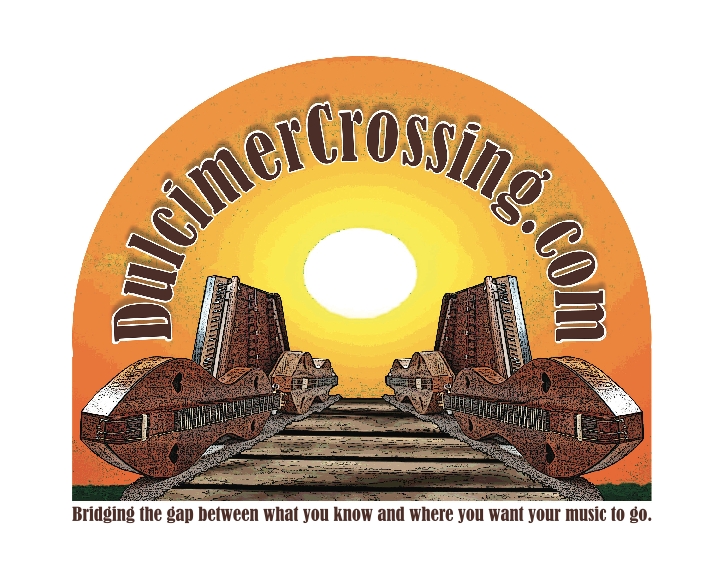by Steve Eulberg
Here is the chicken-or-egg question, regardless of whether one is a student or a teacher.
Which is more important in learning to play an instrument: Technique or Repertoire?
Both are necessary, of course, but how would you answer the question?
Perhaps one of these phrases describes you as a Student, whether you are working with a private instructor, or making workshop decisions when you attend a festival:
Student A: “Tunes! There are so many tunes! I want to learn to play them all! And play them well! Don’t confuse me with technique!”

Student B: “Some of these tunes are too hard, and I can’t make up my mind about which is the best hand to start with, or what pattern to use, or how to remember which one (hand or pattern!) that worked best for me last time….Ugh! Maybe I should learn some better technique……”
Student C: “My playing is limited by my poor attention to technique. I’ve been playing for awhile now and I’m a little bored with my playing. I should learn to play more accurately and learn some exercises to practice or polish my technique, but I just get bored playing only exercises.”
Student D: “I’m sorry, but I wasn’t able to practice my the tunes in my lesson this week, because every day the past week, I found myself playing chords, over and over again and the time would just evaporate!”
Or maybe you are a Teacher and one of these phrases describes your experience:
Teacher A: “I want my students to have fun and they get bored pretty quickly if all I give them are hammering, strumming or picking drills.”
Teacher B: “My students are great at picking up the techniques that I teach, but can’t seem to apply them in their playing–which seems to be a bit sloppy and haphazard.”
 Teacher C: “I’ve got to submit topics for the weeklong festival I’m teaching next year and I know if I teach a cool-sounding repertoire workshop I’ll get lots of people signing up for it, which will improve my chances of getting hired for a following year.
Teacher C: “I’ve got to submit topics for the weeklong festival I’m teaching next year and I know if I teach a cool-sounding repertoire workshop I’ll get lots of people signing up for it, which will improve my chances of getting hired for a following year.
Teacher D: “As a self-taught instructor, I really need help learning the techniques myself! I’m pretty good at picking up the tunes, but I find myself bumping up against my playing limits too often.”
In my experience as both student and teacher, whether in my private studio, in week-long and weekend workshops and festivals or here, on DulcimerCrossing.com, I seek to follow these guidelines:
1. Balance
Which came first? This is a bit of a false dilemma. To play the instrument of your choice effectively, you need BOTH. The key is balance. Of course I need to know how to make the sounds on my instrument (technique), of course I need to know where to find the notes (technique), but a flurry of notes without purpose is not satisfying, so I need some direction, a melody, some harmony (repetoire).
2. Paying Careful attention to to technique while I am playing the tunes I love.
As I am learning and playing tunes, I pay attention to the structure of the tune, I experiment with ways to play the tune and think about where I need to go next before settling on a particular path to follow. I find myself comparing tunes to each other: “This part of this tune is like that part of Mary Had A Little Lamb. These comparisons help me generalize and transfer learning from a specific tune to the broader scope of music. I am always asking questions like: “Why did I make that decision and why does it work–or not work?”
3. Creating Exercises from the “lumpy” part of the tunes.
To help transfer the learning and deepen my understanding, I am always looking for tunes that apply the techniques that challenge me or my students, or I end up creating Etudes (tunes that are built on and exercise the technique) that focus on the part of the tune that is giving me or my students a hard time. Truly, I’ve found that the most valuable exercises that I’ve used are the ones that I’ve created to address a weak point in my playing. And, some of the exercises even graduate and become full-fledged tunes! (Jumpin’ Java is a case in point.)
4. Being Play-Full
Remembering that we play music, we don’t work music we can be seriously “playfull”. The repetitious, mechanical motions of playing our instruments are what imprint the patterns in our brains and in our hands. There is no substitute for actually playing.
And the pursuit of technique can lead to the creation of new tunes, which broadens one’s repertoire as well.
The circle is again complete!


Lorri
March 23, 2012 at 7:36 pm
This is a helpful article, Steve. I have not spent a great deal of time with refining technique for just wanting to play tunes. I have definitely ran into limits of playing many a tune and since I have found your spider fingering scale exercises, I have a place to begin practicing with becoming a better player. Thanks, I think I will enjoy them.
Lorri
Steve Eulberg
March 23, 2012 at 8:39 pm
Hi Lorri,
It sounds like your path is a well-traveled one (including by me!) Let me know how your progress is coming!
More dulcimer = More beauty = Better World!